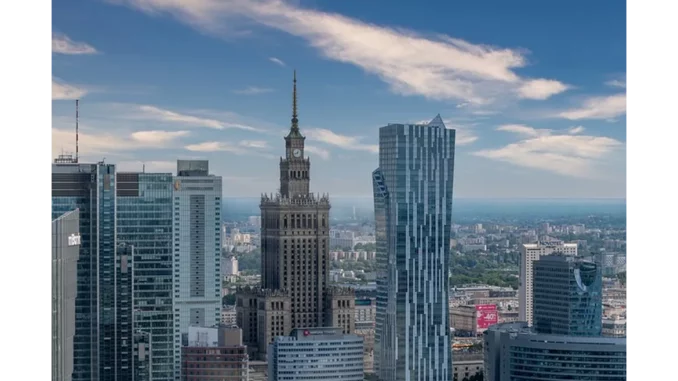
In the realm of real estate development, the quest to harmonise modernity with sustainability presents a formidable challenge. Yet, Ghelamco, a prominent name in the construction sector, has successfully navigated this complex landscape, setting a benchmark with its Warsaw UNIT skyscraper, which recently earned the prestigious BREEAM Outstanding certification. This accolade not only signifies the building’s exceptional environmental credentials but also highlights the crucial role of sustainable architecture in crafting the urban environments of tomorrow.
Successful low-energy building design hinges on careful planning. Focus360 Energy can help.
The BREEAM, or Building Research Establishment Environmental Assessment Method, stands as the world’s pioneering and most extensively adopted environmental assessment system for buildings. Originating in the United Kingdom, BREEAM offers a robust framework for assessing the sustainability of buildings, taking into account various elements such as energy efficiency, water conservation, transport accessibility, materials utilisation, waste management, and ecological impact. Attaining a BREEAM Outstanding rating serves as a hallmark of excellence in these domains, establishing a high standard for sustainability within the built environment.
Warsaw UNIT, strategically positioned at the vibrant Daszyńskiego Roundabout, exemplifies the seamless integration of sustainable design within modern architectural practice. Conceived by the Polish-Belgian Architecture Studio Projekt, this skyscraper is replete with features that contribute to its distinguished BREEAM rating. Among these are advanced systems for energy efficiency, innovative water-saving technologies, and a prime location that enhances accessibility to public transport. The building’s strategic position within a major transport nexus significantly bolsters its sustainability credentials by facilitating excellent connectivity. This, in turn, reduces the dependence on private vehicles and encourages the adoption of public transport, thereby lessening its environmental impact. Moreover, the building’s water management systems are meticulously designed to curtail consumption, further elevating its environmental performance.
The successful attainment of the BREEAM Outstanding certification by Warsaw UNIT is largely attributable to the integration of state-of-the-art technology. The skyscraper is equipped with smart systems that continuously monitor and optimise energy usage, ensuring efficient resource utilisation. This not only diminishes the building’s carbon footprint but also generates substantial cost savings for its occupants. Furthermore, Warsaw UNIT is actively pursuing WELL v2 certification, which underscores the importance of occupant health and well-being. This certification complements BREEAM by focusing on enhancing the quality of life for the building’s inhabitants, thus creating a holistic approach to sustainable development.
Ghelamco’s accomplishment with Warsaw UNIT represents a significant milestone not only for the company but also for the broader real estate industry. It sets a powerful precedent, challenging other developers to prioritise sustainability in their projects and demonstrating that environmentally responsible design can coexist with commercial viability. The recognition of Warsaw UNIT as one of Poland’s premier skyscrapers, coupled with the high interest it has garnered from tenants, reflects the burgeoning demand for sustainable buildings. As awareness grows regarding the environmental implications of development choices, the market for green buildings is anticipated to expand, thereby spurring further innovation and advancement in sustainable architecture.
In setting a new standard for environmental performance through the BREEAM Outstanding certification of Warsaw UNIT, Ghelamco exemplifies its unwavering commitment to sustainability and innovation within the real estate sector. This achievement not only paves the way for a more sustainable future in urban development but also serves as an invaluable template for the next generation of sustainable buildings as cities continue to grow and evolve. The lessons derived from projects like Warsaw UNIT will play a critical role in shaping the future of urban landscapes, ensuring that they remain resilient and sustainable for the generations to come.


Be the first to comment